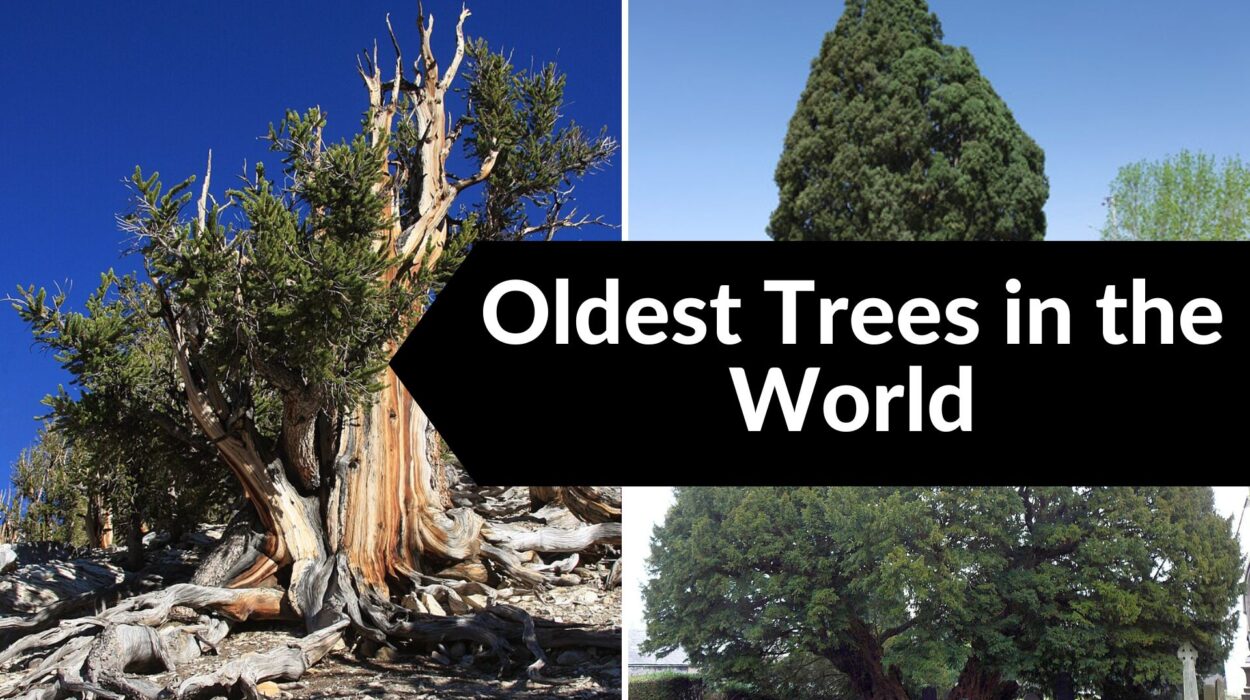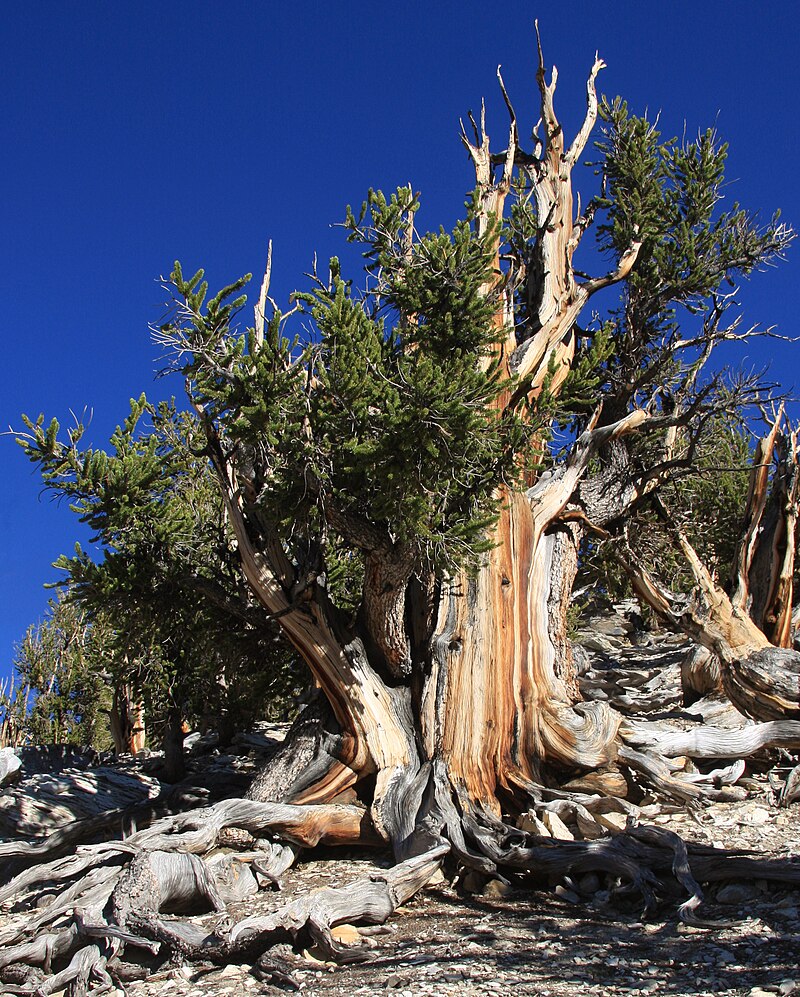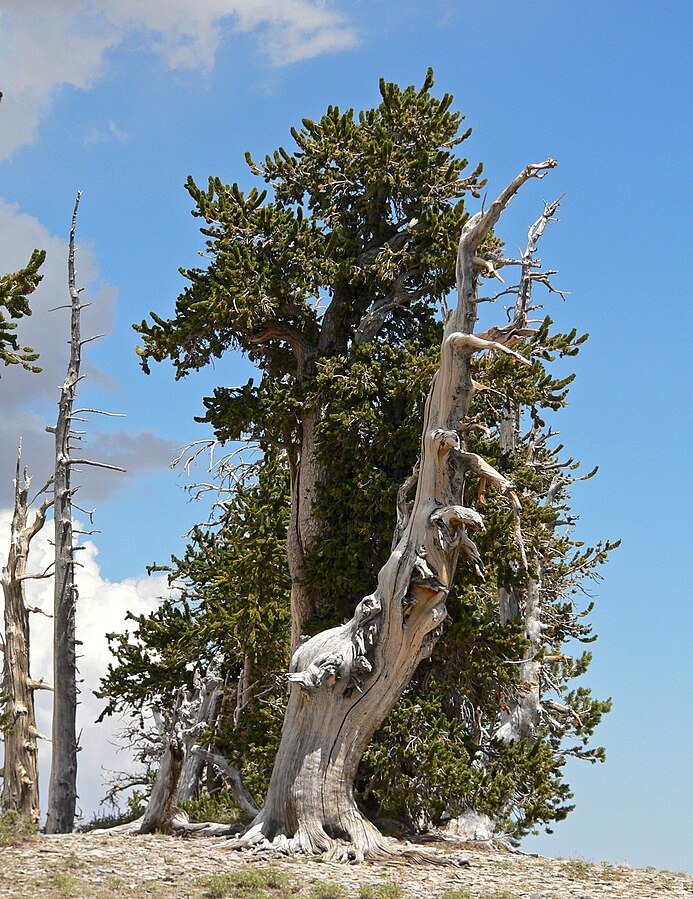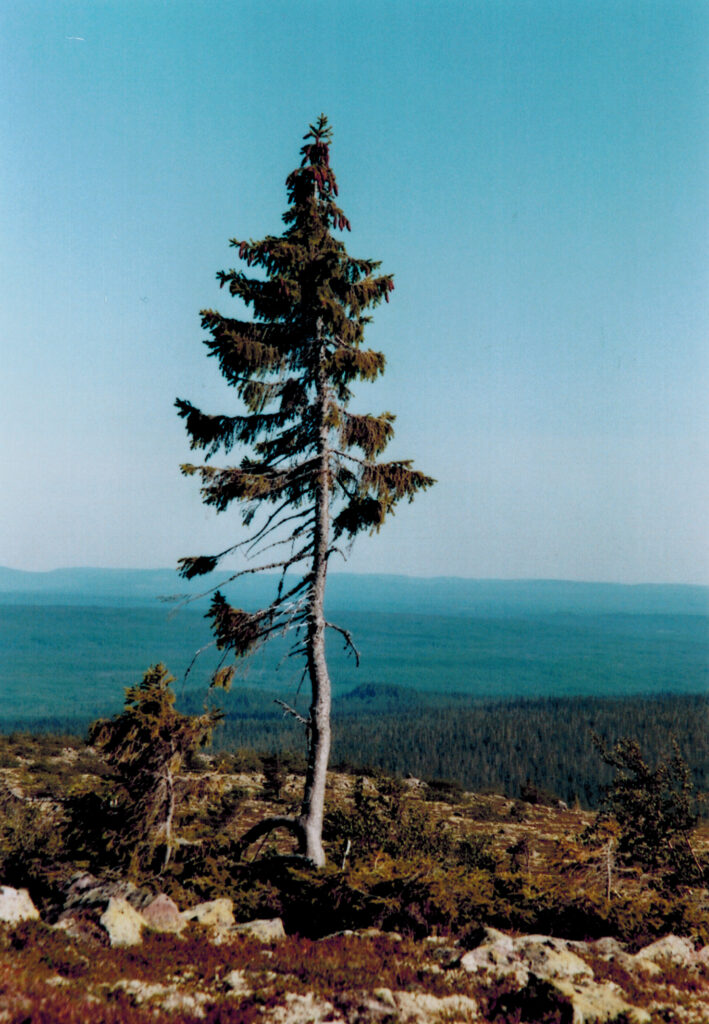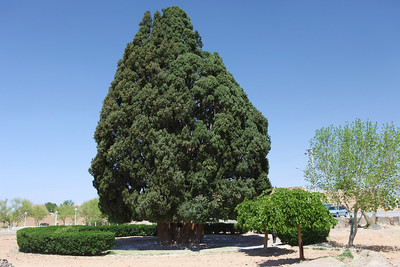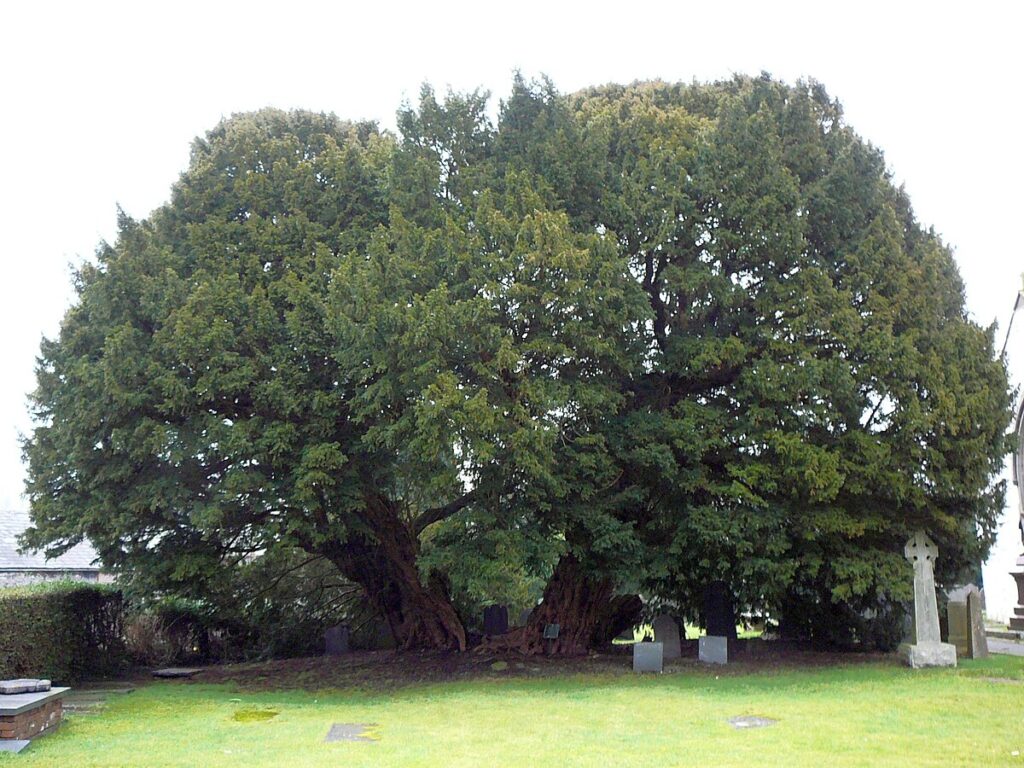The world’s oldest trees are amazing examples of how strong and durable nature is. These ancient giants have stood still for thousands of years, facing problems in their environment, changes in the weather, and even interference from people. We will learn about the amazing stories of five of the world’s oldest trees in this blog. Each tree has its own story of survival, mystery, and historical importance.
- The Story of Methuselah the World’s Oldest Living Tree
- The Tragic Tale of Prometheus a 5,000-Year-Old Tree Lost to Human Error
- The Ancient Norway Spruce of Old Tjikko in Sweden
- The Enduring Legacy of Abarqu’s 4500-Year-Old Cypress Tree
- The Mystique of the Llangernyw Yew Tree in Wales
Come with us as we learn about the interesting lives of these trees, which are living reminders of Earth’s past and proof of how strong nature is.
The Story of Methuselah the World’s Oldest Living Tree
Trees stand tall as time wears down the world around them, silent witnesses to history. Each ring in their trunks has a story behind it that shows what they’ve been through over the years. Some trees, like Methuselah, have been around for thousands of years and are now seen as symbols of strength and nature’s unmatched endurance.
For example, the southern live oak, which is why it’s called “Big Tree,” is a symbol of strength. This 400-year-old oak tree in Florida has been through three lightning strikes and several hurricanes. Even with these problems, it is still so strong that people are trying to clone it to make sure its legacy lives on.
But how do we know which tree is the oldest? Guinness World Records says that the bristlecone pine species, whose scientific name is Pinus longaeva, holds the record. In the White Mountains of California, these old trees do very well in harsh conditions that would kill most other species. Methuselah is the world’s oldest living tree. It is a bristlecone pine that is thought to be almost 5,000 years old.
Methuselah was named after a biblical figure who lived a very long time. It was found in 1957 by dendrochronologist Edmund Schulman. A very old bristlecone pine named Prometheus held the record before Methuselah claimed it. It’s sad that Prometheus was cut down in 1964. Scientists later found out that it was probably 4,900 years old.
Bristlecone pines are very hardy and can grow well in harsh conditions. As “extremeophiles,” they can handle cold winds, dry soil, and short growing seasons, but they grow slowly. Their special “sectored architecture” lets certain roots feed only certain parts of the tree. If a root dies, only that part of the tree stops growing. The rest of the tree keeps growing, making a beautiful mosaic of life and death.
As of May 2024, Methuselah is still alive and growing in the Inyo National Forest in California. It is in a place between the Sierra Nevada mountains and the border with Nevada. Because the U.S. Forest Service wants to keep this ancient wonder safe, they keep its exact location a closely guarded secret.
Methuselah is not only an amazing example of how to live a long time, but also a symbol of nature’s strength and the lessons it can teach us about how to survive and keep going when things get hard.
The Tragic Tale of Prometheus a 5,000-Year-Old Tree Lost to Human Error
The weathered remains of a once-majestic bristlecone pine, famously known as Prometheus, can be found in a peaceful group of pine trees on Nevada’s Wheeler Peak. This old tree, which was thought to have lived for almost 5,000 years, died too soon because of what an overzealous scientist did.
Prometheus, which was also known as WPN-114, was a Great Basin Bristlecone Pine, which is a very rare species that is known for living a very long time. Clonal plant systems can keep living for tens of thousands of years by copying and replacing their parts. Prometheus, on the other hand, was a single organism that had lived for thousands of years. From a small sapling, it steadily grew, living through many human civilizations and the harsh mountain climate. People thought it was one of the oldest non-clonal organisms still alive on Earth.
In the 1960s, a graduate student studying old trees found Prometheus’ grove by accident. With permission, he tried to use a special borer to get a sample from the tree’s trunk. When the tool got stuck in the thicket, he chose to cut down the tree to get it out. He didn’t understand how bad his mistake was until he counted the rings on it. He cut down a tree that was older than any other known tree.
This event caused a lot of anger and was used as a lesson in the scientific community. People didn’t like the researcher, so the focus shifted to protecting other old bristlecone pines. More security was put in place to keep these natural wonders safe from similar accidents.
Even now, Prometheus’s body rests peacefully on Wheeler Peak. Even though they are broken up and worn down by time, the pieces of this old tree are a powerful reminder of both nature’s strength and what happens when people are careless.
The Ancient Norway Spruce of Old Tjikko in Sweden
Old Tjikko is a remarkable Norway Spruce that is 9,550 years old. It is on Fulufjället Mountain in Dalarna province, Sweden. Carbon dating of plant matter found under the tree proved that it was indeed one of the oldest trees still alive on Earth. The trunk is only a few hundred years old, but the root system is very old. It has been around for thousands of years thanks to a process called layering. When a branch touches the ground, it starts to grow new roots. This process lets the tree grow back and live for thousands of years.
Old Tjikko is 16 feet tall. He was originally short-lived because of how harsh the mountain was, but as the climate warmed up over the last hundred years, he started to grow more like a normal tree. The tree is named for “Old Tjikko,” Leif Kullman’s late dog, who found it. Scientists think that the tree’s sudden growth is caused by climate change.
Vegetative cloning is what has allowed the tree to live so long. The trunk that you can see may only live for about 600 years, dying and growing back several times, but the roots will last forever. When it snows a lot in the winter, the tree’s branches may fall to the ground. This is called “layering,” and the roots take hold and the branches grow back. Other trees, like coast redwoods and western red cedars, can do the same thing.
Carbon-14 dating has shown that the tree’s roots go back 9,550 years. Other roots have been found that go back as far as 9,000 and 5,660 years. The tree is thought to have started to grow around 7550 BC. To give you an idea of how long ago this was, writing didn’t start appearing until about 4,000 BC.
Old Tjikko’s existence challenges earlier ideas about how Norway spruces got to Sweden. It was thought that they only came over about 2,000 years ago. The area was hit by an ice age until about 11,000 years ago, which made it unlikely that such old trees would have survived. But Old Tjikko shows that’s not true.
Going to Old Tjikko is a one-of-a-kind experience if you happen to be in Sweden’s Dalarna province. The path to the tree isn’t marked so that it doesn’t get too crowded, but guided tours can be set up so that you can see one of the oldest living things in the world for yourself.
The Enduring Legacy of Abarqu’s 4500-Year-Old Cypress Tree
An enormous cypress tree has been standing in Yazd, in the southeast of Iran, for more than 4,500 years. As one of the world’s biggest living things, this beautiful tree in the city of Abarqu will soon be protected as one of the most important historical and natural sites in the area.
The Yazd Province Department of Environment is leading efforts to protect this very old tree. Russian scientist Alexander Rouf suggests that it is around 4,000 years old. The tree is spectacular, standing 25 meters tall and having a trunk that is 11.5 meters around. Being nominated for the World Heritage list will raise its status even more, which is something it really deserves.
It is proudly displayed inside the Grand Mosque of Abarqu, which was originally built as a Zoroastrian fire temple called Chahar Taqi. Locals believe that Prophet Zarathushtra (Zoroaster) planted this tree because it has deep spiritual meaning to them. The city of Abarqu is very important to Iranian culture, and it is also where the majority of Arab Zoroastrians live.
Cypress Trees in Iranian Culture
Symbolically, the cypress tree is very important in Iranian culture. Photographers and poets have often used it as a metaphor for the idealized beloved because it stands for beauty, endurance, and strength. Elegant, graceful, and tall, the beloved’s description often brings to mind the cypress, which is admired for its thin, straight shape.
Beyond its beauty, the cypress tree stands for honesty, freedom, and purity. For mystics, it represents spiritual freedom because it never bends, no matter if it is in bloom or not. Others see the cypress as a symbol of truth because it doesn’t have any flaws like other trees do.
Persian art and architecture have used the cypress a lot throughout history. Friezes at Persepolis, an ancient sign of grandeur, show its tall, thin shape. Crimson cypress trees have been used by artists, tile makers, and weavers for a long time. Iranian women also use them as motifs in their colorful tapestries and textiles.
It was ordered by the Abbasid Caliph Al-Mutawakkal to cut down the legendary cypress of Kashmar, which is linked to one of the saddest stories in the history of the cypress tree. According to history, the prophet Zoroaster planted two huge cypress trees in Faryumaz and Kashmar to bring good luck. According to reports, the huge tree in Kashmar had to be cut down and taken to the caliph’s palace in Samarra, which would cost a bundle. Unfortunately, the caliph was killed before the tree could get to its destination, and the men who were transporting it died too soon. Unfortunately, this event led to a long-lasting respect for the cypress tree, which poets and artists have immortalized in their works.
The cypress added to Iranian culture over time. When the country got back to its national identity during the Safavid era, the tree’s meaning became accepted, but Zoroaster’s name was slowly taken out of its story. On the contrary, the cypress continued to be a sign of strength and devotion, especially during Shi’ite ceremonies for mourning. During these ceremonies, small metal trees called “alam” were carried to honor the martyrs, and large wooden trees called “nakhl” were also visible.
Ancient artifacts that are still alive in the Cypress Tree of Abarqu are a reminder of how Iranian culture lives on. After standing proudly for thousands of years, it is still a sign of strength, beauty, and timelessness. It represents a long history that has shaped the country’s identity for thousands of years.
The Mystique of the Llangernyw Yew Tree in Wales
The Llangernyw Yew tree in Conwy, Wales, is very old and unique. It is thought to be between 4,000 and 5,000 years old. It’s hard to say for sure how old yew trees are because the cores die off over time, but the Llangernyw Yew is one of the oldest trees still standing in Great Britain. If it is older than most people think, it would be from the Bronze Age, which is a long time before Christianity came to the British Isles.
This amazing tree is a living memorial to history. Its split trunk looks like a doorway to the afterlife, with a small group of tombstones just beyond it. The yew was named one of the Fifty Great British Trees in 2002, which shows how important it is to British history and culture.
Welsh mythology has a lot to do with the tree, which makes it even more mysterious. A ghost called Angelystor, also called the “Recording Angel,” is said to live there. On Halloween, this ghost is thought to speak from the altar of a nearby church and tell the names of parishioners who will die before the next Halloween. People from the area gather under the church’s east window and listen carefully for their names to be called out by the angel.
Angelystor’s spiritual presence has not yet been scientifically proven, but it is a part of hundreds of years of folklore and written history. This makes the Llangernyw Yew more real and helps it stay that way.
Thank you for coming with us on this trip to learn about the lives of the oldest trees in the world. We hope that their stories make you value the natural beauty around us and realize how important it is to protect it for future generations.
Please tell your friends and family about this article if you liked it! Let us get the word out about these timeless treasures and the need to keep our planet’s natural history safe.
Please get in touch with us! Which old tree is your favorite? Or maybe you know something amazing about trees. Enter your thoughts in the box below, and we’ll be happy to keep talking with you.

